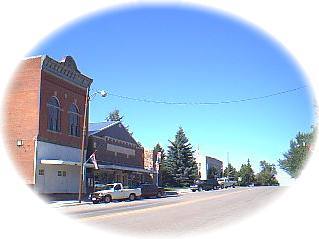
Located on the Niobrara River in northwestern Nebraska, the Agate Fossil Beds and its surrounding prairie are preserved in a 3,000 acre National Monument. Once part of "Captain" James H. Cook's Agate Springs Ranch, the nearby beds are an important source for 19.2 million year-old Miocene epoch mammal fossils. Cook's ranch also became a gathering place for Chief Red Cloud and other Oglala Lakota (Sioux) Indian people. The monument's Cook Collection of American Indian artifacts reflects years of gifts brought by the Indians during visits to the ranch from the 1880's through the early 1900's.
A visitor center houses historical and archaeological exhibits. Visitors may take the Fossil Hills Trail to Carnegie and University Hills, where fossils were quarried. The trail leads from the visitor center, across the Niobrara River, to the fossil sites. The Daemonetix Trail leads from a traffic pullout near the west entrance to the monument through nearby fossil hills.
Special Programs, - From Memorial through Labor Day weekends ranger conducted walks and talks are available on request and begin in the visitors center. Subjects covered during the walks may include geology, paleontology, botany, zoology, and ranching history. The Cook Collection and fossils are common topics of ranger talks.
Exhibits - The visitor center houses three rooms of exhibits, the Hitchcock Theater and the Cook Collection Gallery. The life size fossil diorama depicts life and death at the Agate waterhole, 19.2 million years in the past. An interactive computer tour offers visitors a glimpse of things to bee seen on the monument's two trails.
About 200 artifacts are displayed in The James H. Cook Collection Gallery, "A Window onto Lakota Life." Visitors can view special gifts given to the Cook family including a porcupine quilled tanned antelope ceremonial shirt worn by Chief Red Cloud, a memorable whetstone used by Chief Crazy Horse, and a war club used by Oglala leader American Horse at The Fetterman Massacre. Chief Red Cloud gave Cook a pipestone cannunpa( Lakota for pipe), which was used prior to negotiations of the Fort Laramie Treaty of 1868. Two hide paintings were prepared for The Cook Collection exhibits by Lakota artists Dawn Little Sky and Martin Red Bear. The Running Water Winter Count hide painted by Dawn introduces visitors to the method that Lakota historians used to record events important to the people. Martin's hide painting depicts events remembered by Lakota warrior participants in the 1876 Battle of the Greasy Grass or Battle of the Little Bighorn. This is a recreation of the faded original hide painting prepared by Lakota artists, including Martin's grandfather, around 1898.
